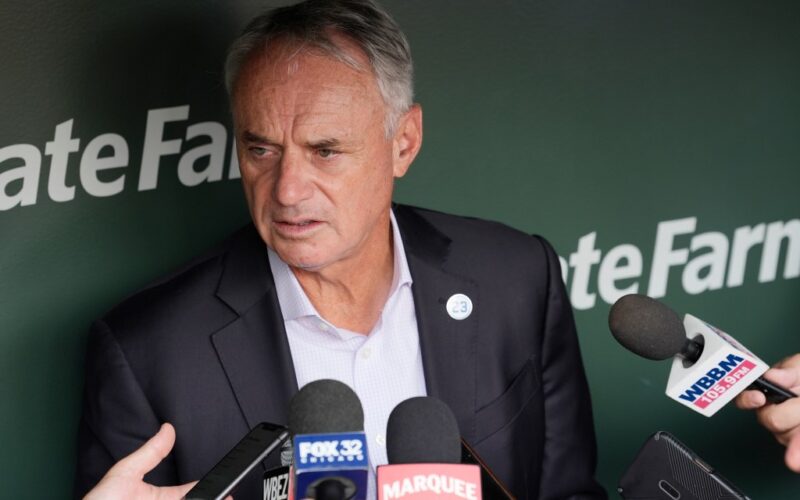As Major League Baseball’s (MLB) Collective Bargaining Agreement nears expiration in December 2026, opening salvos are being fired. MLB Commissioner Rob Manfred wants to rein in costs for owners, while the players oppose any steps that would curb the runaway growth in salaries.
The one voice we won’t hear from, one that has no representation in the negotiations, is the fan. But the owners and union avoid hearing from fans at their own peril. Because without fans, baseball has no economic future.
Central to these negotiations is the notion of competitive balance. For fans, competitive balance is very simple. If all teams have an equal chance to compete, there’s competitive balance. If structural biases hinder some teams, there isn’t. And by this definition, MLB fails. Miserably.
In 2025 the highest-payroll MLB team (Dodgers, $341 million) spent about five times the lowest (Marlins, $68 million). Some lower-payroll teams could spend more, but there’s little chance they could spend near that higher level. That is a structural bias.
And it makes a difference. Even with all the patches MLB has implemented, only one true small market team (Royals) has won the World Series in two decades. And only two teams (Royals, 2017 Astros) have won the World Series since at least 2011 without a top-10 payroll, and they both won by tanking (deliberately fielding a non-competitive team for several years to improve a club’s future chances through drafts and trades).
Indeed, five (Royals, Cubs, Astros, Nationals, Braves) of the eight franchises that have won the World Series in the past decade only won after “tanking.”
Defenders of the current system point to the many clubs that have made the playoffs recently. But those numbers simply reflect the addition of more playoff spots. More relevant is that half of all playoff spots over the past decade have gone to top-10 payroll teams. Meanwhile, of the 11 clubs that failed to make the playoffs more than twice in this period, only two are larger market teams.
Others point to the Tampa Bay Rays as proof that small-market clubs can compete consistently. Aside from the fact that the Rays’ model has been exceedingly hard to replicate, it is farcical to suggest that competitive balance is achieved when smaller market teams must pull off the management equivalent of throwing a perfect game, while high-payroll teams can consistently compete.
I neither begrudge bigger market teams their runaway spending nor those small- and mid-market teams their tanking. Both are acting rationally within the current system. For fans, however, it is utterly demoralizing either to root for a team that isn’t trying or to face clubs spending at levels yours could never imagine.
Yet tanking and runaway spending are merely symptoms of what’s wrong. The core problem is that MLB does not provide a level playing field for all teams. Everyone knows this, but with MLB franchises growing in value by 8% per year over the past decade and top salaries skyrocketing, neither owners nor players have an incentive to change. Fans’ interests go ignored, and all we hear about are more patches to the system. These patches haven’t solved anything yet, and they won’t solve anything moving forward.
Instead, we need to acknowledge that, for most fans, the system is broken and fix that. Until we do that, MLB is playing a dangerous game of roulette in assuming that fans will continue to show up.
Here’s one path forward, from a fan’s perspective. First, eliminate economic stratification among teams by creating a salary band. A band of $180 million (floor) to $220 million (ceiling) would reduce the ratio of highest to lowest payrolls from 5.0 to just 1.2.
Second, guarantee salary growth by annually increasing the salary band by 4% (half the growth rate of the average MLB franchise). If all 30 teams spent at the band’s midpoint ($200 million initially), after five years total salary spending would reach $7.3 billion, a 42% jump from 2025.
Third, enable smaller market teams to reach the salary band by instituting more robust revenue sharing from TV deals. And while we’re at it, let’s use some of those revenues to make it affordable for all families to regularly attend ballgames (average 2025 cost was $208), without suffering $15 beers, $8 hot dogs, and $30 parking.
These steps would help keep fans engaged by providing all home teams with an equal chance to compete, and by delivering fans an affordable day at the ballpark. It would also control spending for owners while delivering more (and growing) salary spending for players. That’s a great place to start negotiations.
Moss is a lifelong baseball fan who lives in Washington.








